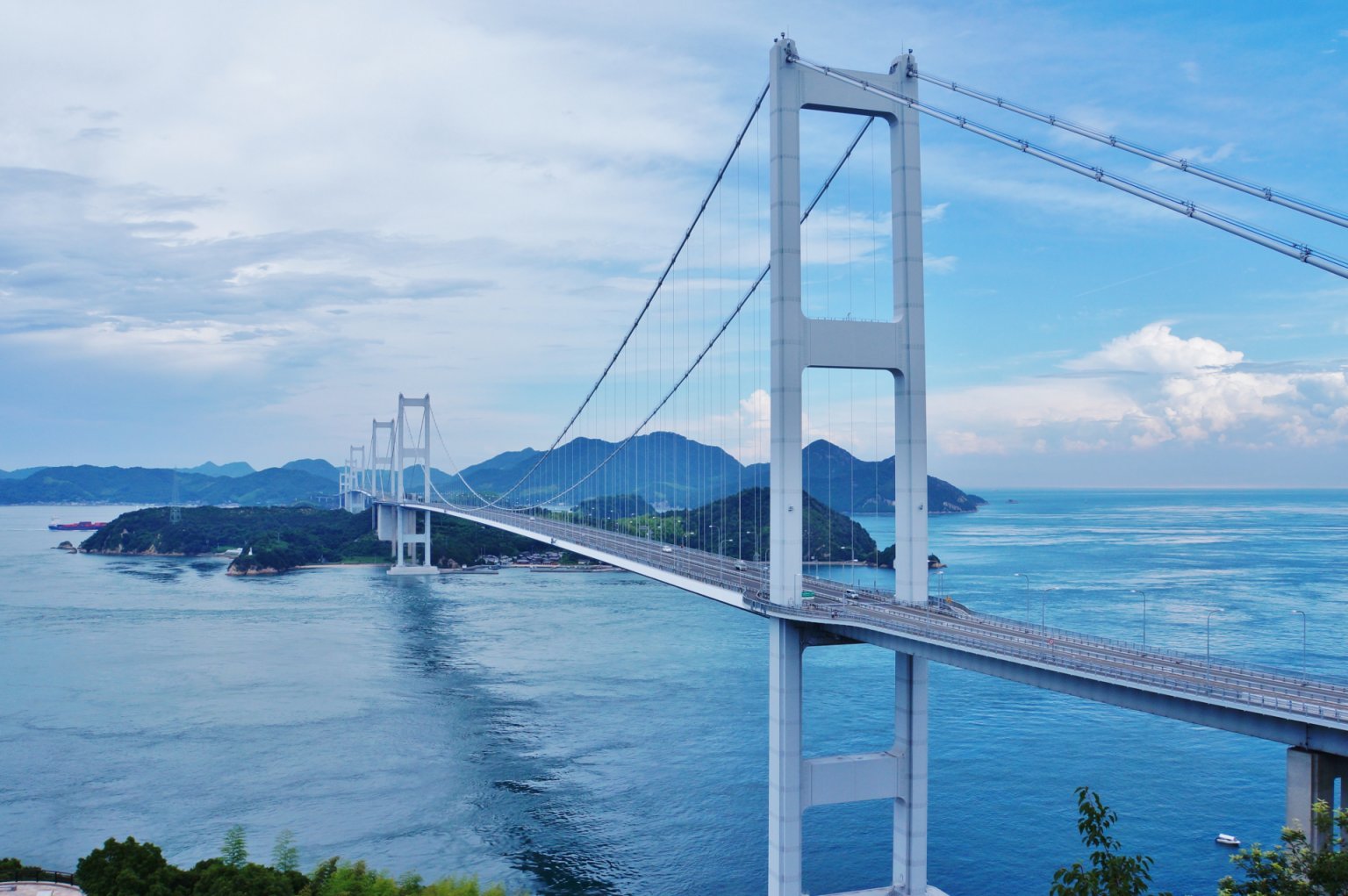
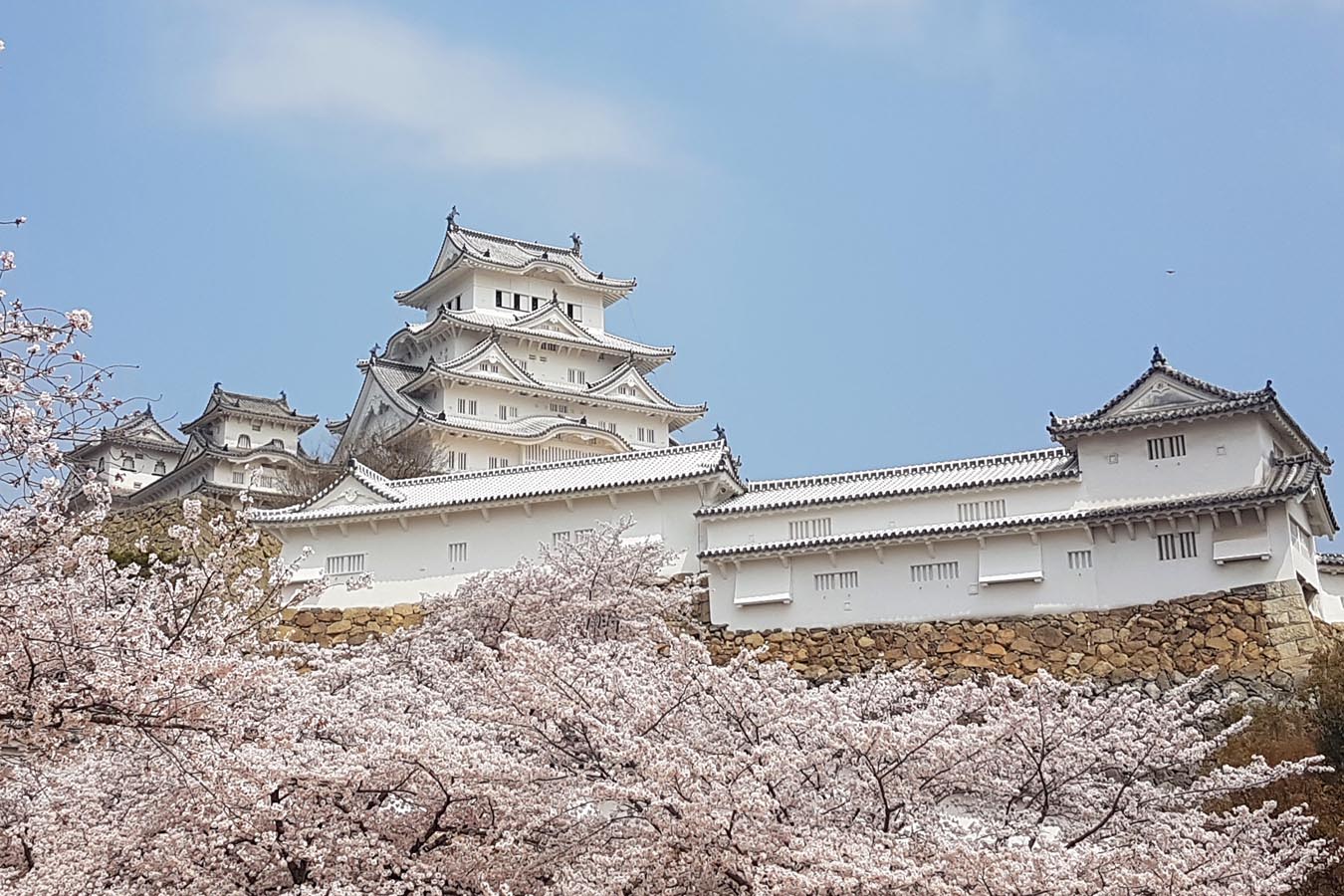
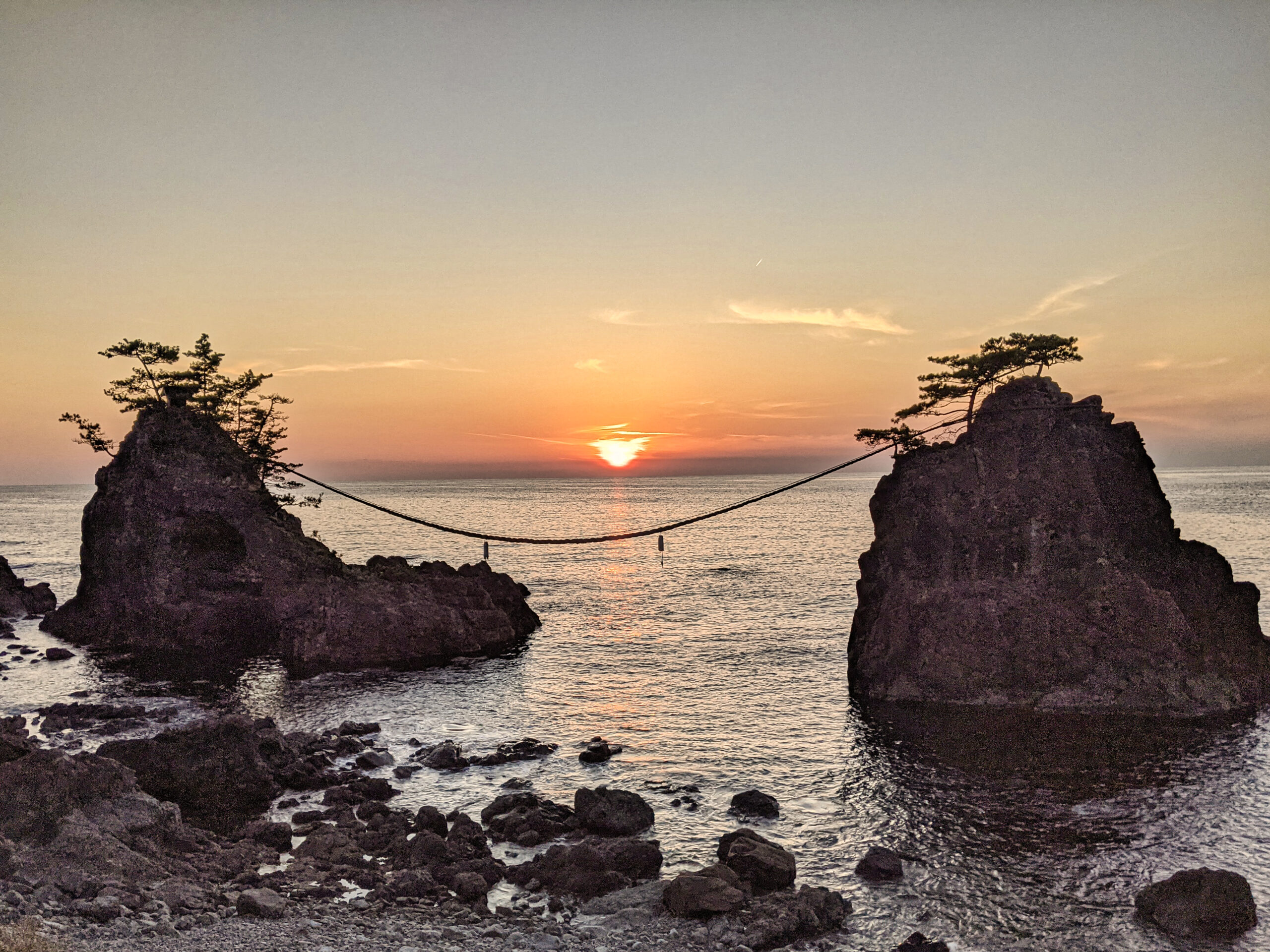
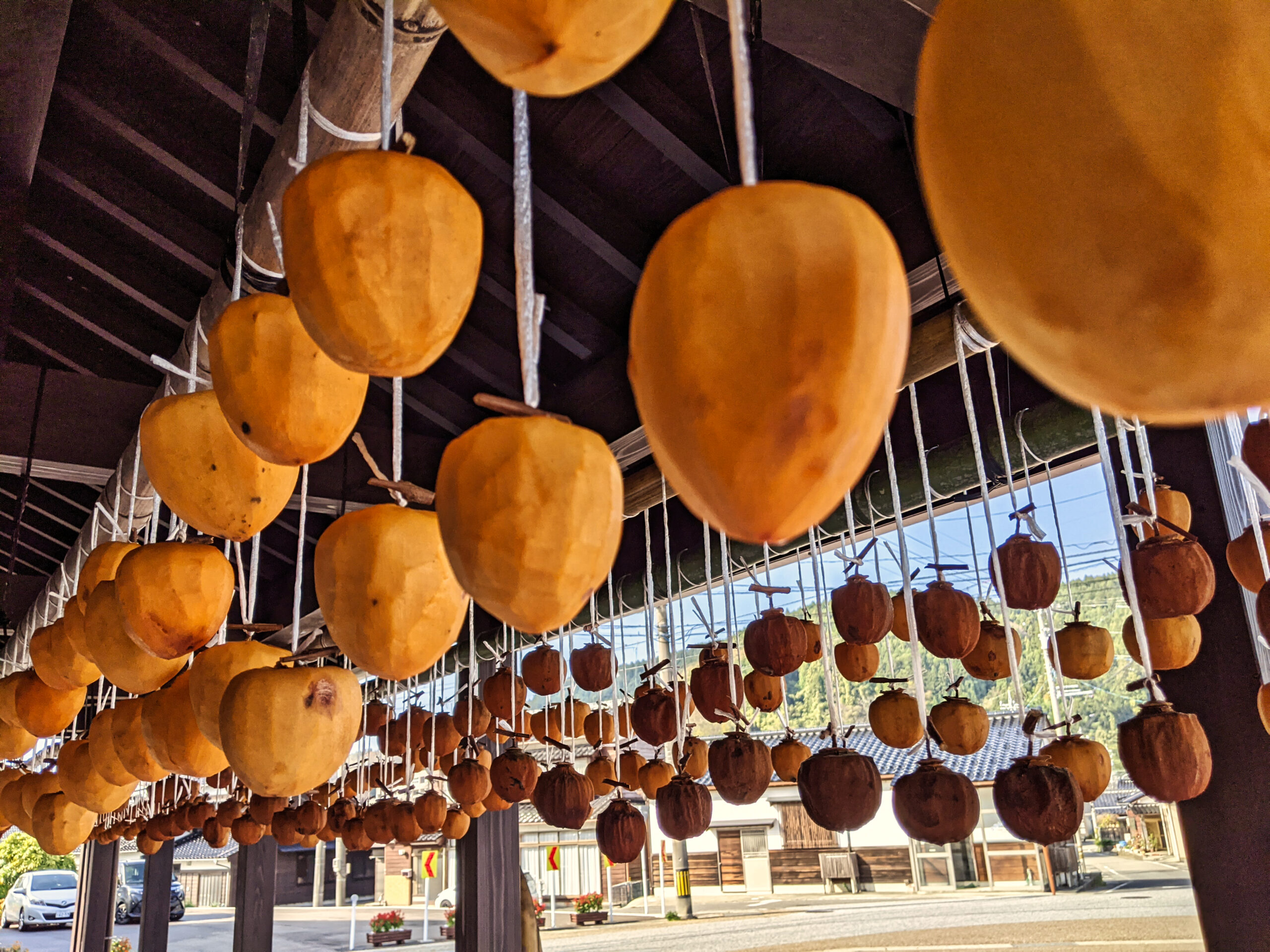
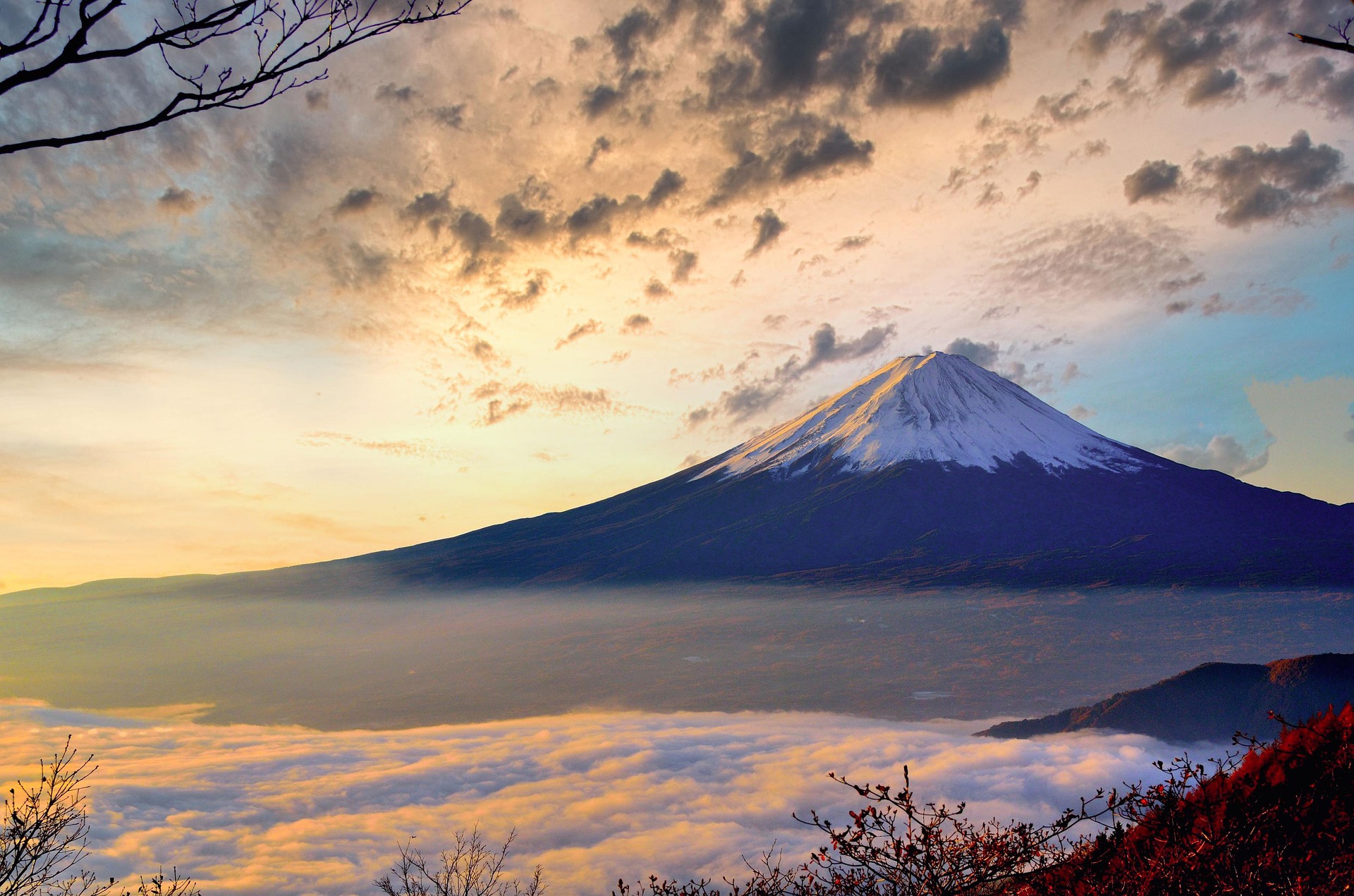
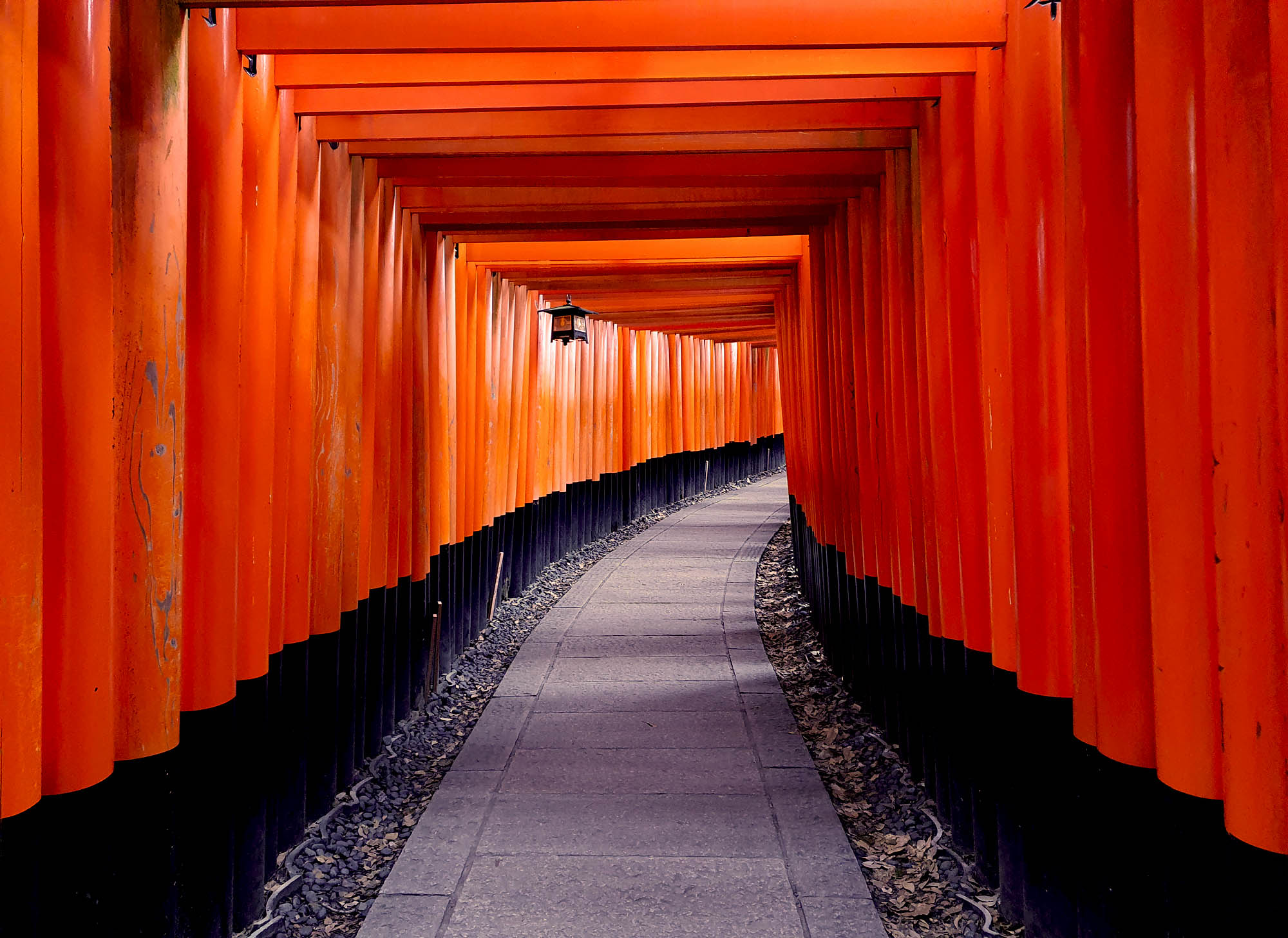
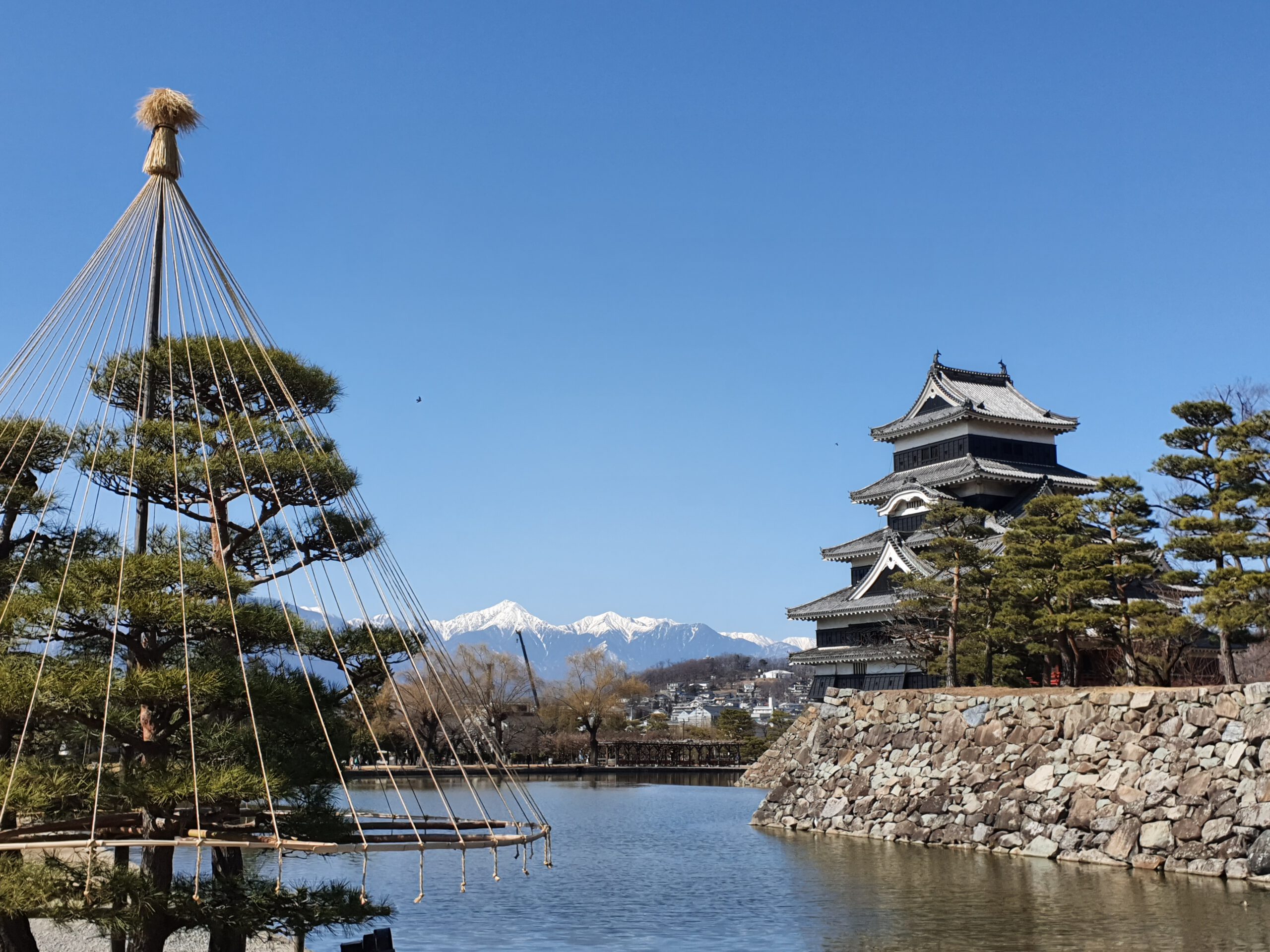
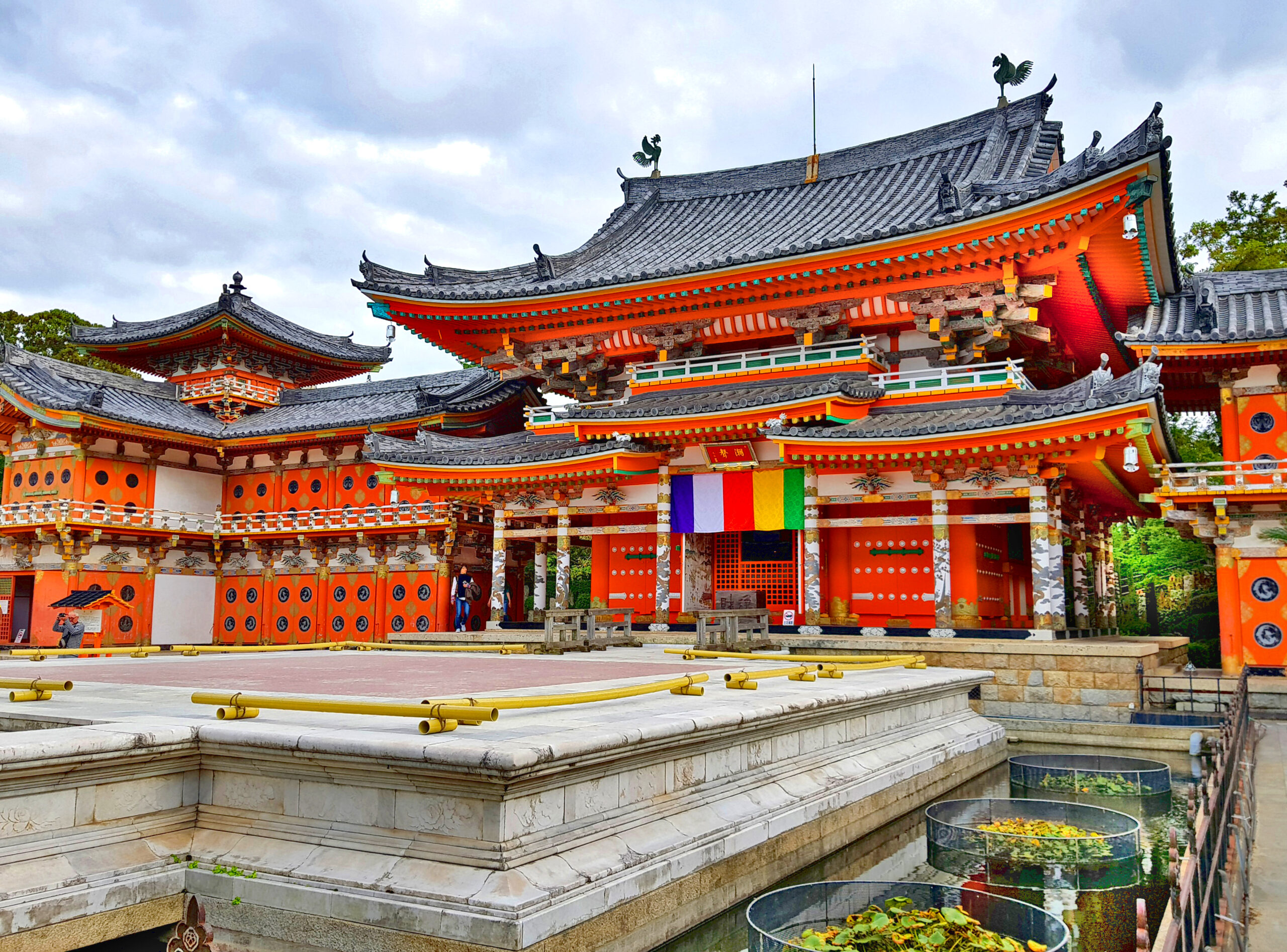
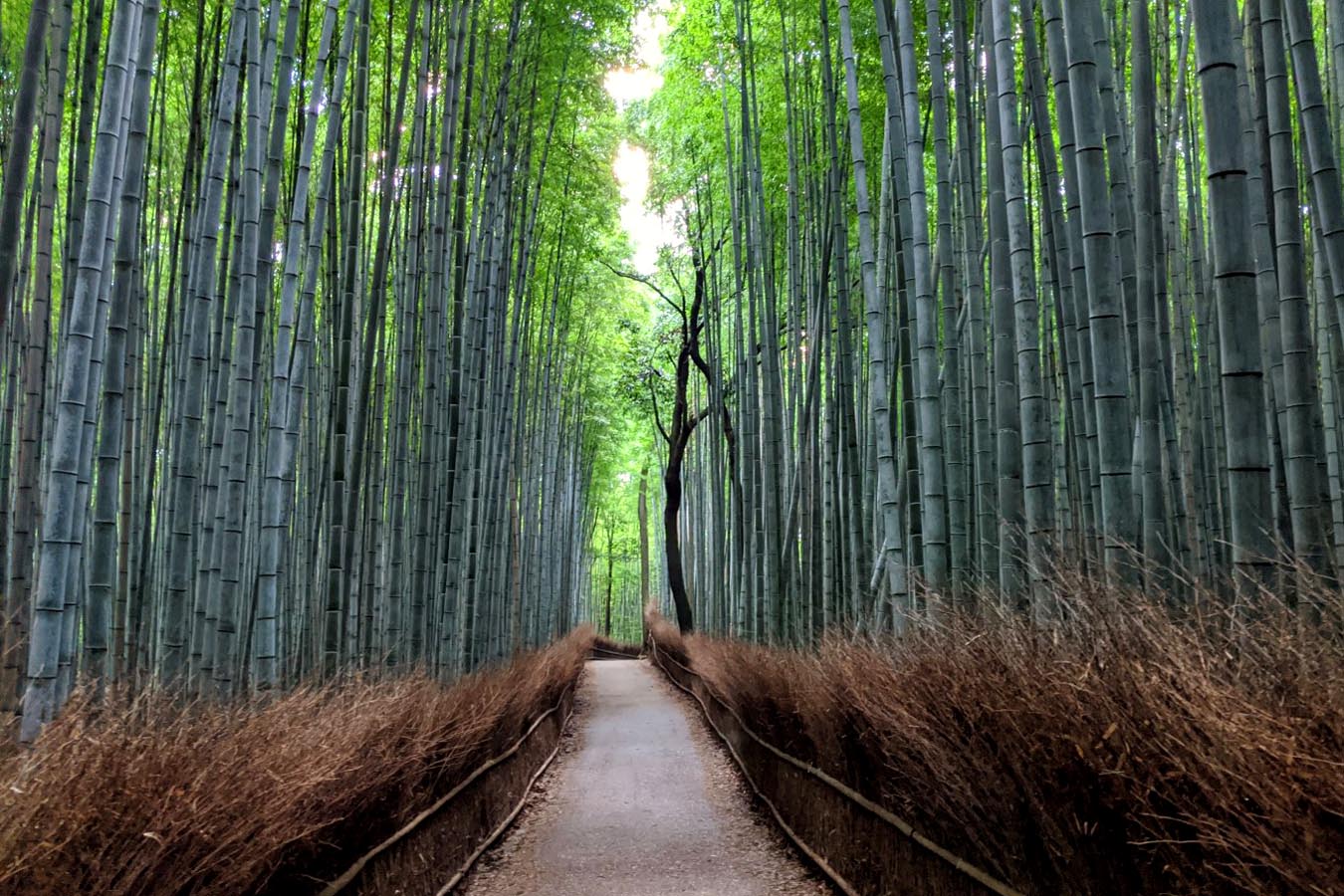
Japan is a land of contrasts - but also home to breathtaking landscapes waiting to be discovered by bike. Whether rugged rocky coasts, breathtaking mountain panoramas, dense forests, seemingly endless suspension bridges at dizzying heights high above sea level or hidden villages off the beaten path. Discover Japan a little off the beaten track and immerse yourself in an active and lasting experience that brings you closer to the history and present of the Land of the Rising Sun. You will not only experience the highlights of Japan's nature sustainably from a bicycle, but also the cultural centers of Kyoto and Kanazawa. Also one of the most breathtaking gardens, the largest castle complex and one of the most beautiful landscapes of the country are part of this unforgettable trip. And this, of course, without sacrificing comfort and closeness to the people. Japan active in the intoxication of the senses.
Highlights:
Detailed prices on request
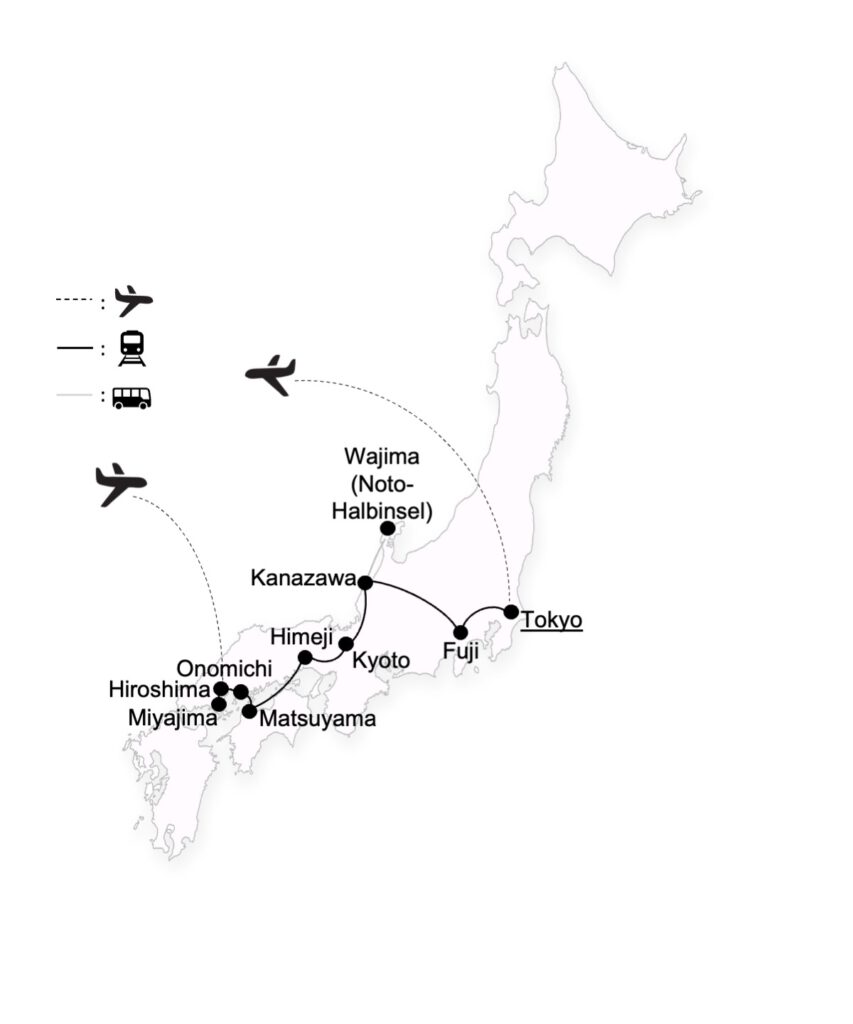
The sacred Fuji
Transfer in Tokyo, onward flight to the port city of Hiroshima. You will be met at the airport by your German tour guide who will transfer you by bus to the centrally located hotel in Hiroshima.
During a short walk through the city center you will gain first impressions of the country. As a welcome dinner there is not only typical food of the country, but a highlight of Hiroshima's cuisine: Okonomiyaki. The large slices of dough mixed with vegetables and meat are topped with various hearty toppings and finally decorated with the typical okonomiyaki sauce. Tastes almost like home!
Miyajima
After breakfast, you will go directly to Hiroshima's nostalgic streetcar, and to the ferry port of Mijayima in Hiroshima Bay. From here, after a short crossing and with the best panoramic view of the striking mountain formations, you will reach Miyajima Island. The island is considered one of the holiest islands in the Shinto faith. From the boat, you have already spotted the large red torii shrine gate in the water and head to Itsukushima Shrine, which seems to float on the water at high tide. First built in the 12th century, this shrine keeps the souls of the three female water goddesses, Tagorihime, Tagitsuhime and Ichikishimahime, who are worshipped for happy travel and safe return. In addition to being honored as a UNESCO World Heritage Site, the shrine's view is one of the three most beautiful landscapes in Japan. In the early afternoon, devote time to the city's sad past at Hiroshima Peace Park and the Atomic Bomb Museum. At 8:16 a.m. on August 6, 1945, the city became the first target of a belligerent nuclear weapons attack.
Shimanami Kaido Suspension Bridges
Today we go directly on our tour across six of the seven large suspension bridges over the inland sea Setonaikai. The so-called Shimanamikaido path was specially developed for bicycles and leads partly in more than 50 meters of altitude across the straits. Spectacular panoramas are guaranteed here! After about 35 kilometers you will reach your accommodation on the inland sea island of Setodacho. The fishing village has been severely affected by demographic change and rural migration, which is why the remaining inhabitants have begun to display stuffed dolls in house windows and public places. Your tour guide will explain the consequences of Japan's aging population specifically for rural areas. Before continuing to your accommodation, you will make a short detour to the breathtakingly "baroque" Kosanji Temple. The buildings were erected as recently as 1936 by a wealthy corporate magnate and overwhelm with its countless decorations and extreme colorfulness. The buildings were stylistically modeled after the Toshogu Great Shrine in Nikko and the Byodoin Temple in Uji and are in no way inferior to them. The "Hill of Eternal Future Hope", built by the artist Kuetani Itto and consisting of huge marble blocks and sculptures, also impresses with its ultra-modern design language. You will spend the night in a modern hotel on Setodacho Island with its own thermal bath.
Bike 35 km (2.5 hours)
Kosanji Temple at Shimanami-kaido
You will start the second stage for about 40 kilometers towards Imabarai. After the four large suspension bridges, you will arrive on the island of Shikoku, Japan's fourth largest main island. In Imabari, you will visit the old harbor castle, which dates back to 17th century models. It is nicknamed "castle on the sea" because of its location and houses a well-stocked museum on the samurai past. After a short train ride, you will arrive at the hot spring resort of Dogo Onsen in Matsuyama in the early evening and look forward not only to an extensive dinner, but also to a visit to the hotel's own onsen (hot spring bath). The surrounding area also invites idleness to the large Dogo Onsen hot spring bath, which also appears in various movies and anime. For reference, we recommend Studio Ghibli's anime "Chihiro's Journey to Wonderland," which is partly set in an imaginative recreation of the Dogo Onsen.
Bike 40 km (4.5 hours)
The white castle of Himeji
By train and Shinkansen you will travel to Himeji, 300 kilometers away. Here you will visit the famous UNESCO World Heritage Site, the Himeji Castle complex, nicknamed "Silver Heron" for its white exposed mortar. In addition to the interior of the castle tower, which is still original from the 17th century, explore the numerous outbuildings and get intoxicated by the pink blossoms of hundreds of cherry trees during spring ester mines. The castle complex also includes the Kokoen walking garden, from which you can enjoy picturesque views of the castle keep. In the late afternoon, you will continue your journey by Shinkansen to Kyoto. You'll view the ultra-modern and imposing station concourse designed by Japanese architect Hara Hiroshi in the 1990s and take a seemingly endless escalator to the roof for a panoramic view of the city.
The bamboo forest of Arashiyama
Today, the ancient imperial capital of Japan is waiting to be discovered by you. Founded at the end of the 8th century, Kyoto is by far the most historic city in Japan with the most UNESCO World Heritage Sites. For you, this morning you will head to one of Japan's great sights: the Sagano Bamboo Forest of Arashiyama. As early as the 14th century, Japan's aristocrats enjoyed idling in the shade of the bamboo hein, which today, like all the mountains around Kyoto, is under strict conservation. Directly at the foot of the hein is the sprawling area of Tenryuji Temple, with its numerous individual gardens and scattered temple buildings. As part of the UNESCO World Heritage Site, the complex has existed since the 14th century and, as one of Japan's great Zen temples, its finely raked gravel gardens invite you to meditate and contemplate on this wonderful journey. However, if you are interested in delving even deeper into the culture of Japan, our tour guide will accompany us for a very special cultural experience. You will have the opportunity to once again get hands on. You have the choice whether to participate in a course for Ikebana, the Japanese art of flower arranging, with competent Japanese guidance or to learn how to make Japanese calligraphy with ink, brush and Japanese paper.
The golden pavilion Kinkakuji
Following the example of the city's population, which is one of the most sustainable in Japan, you will set out today by bike. You'll start with what is arguably Japan's most famous shrine: the UNESCO World Heritage Site of the Kinkakuji Golden Temple. Covered in more than 20 kilos of gold, this three-story pavilion dates back to a temple foundation in the 14th century and, nestled in its garden, is considered the epitome of classical Japanese aesthetics. From here, continue cycling through idyllic side streets to a traditional weaving mill in the Nishijin district, where thick brocades, some with gold and silver threads, are still woven by hand. These are mostly used for obi (kimono belts) and often have the equivalent value of a new small car. Through Kyoto's large city garden, we now head to the old Gosho Imperial Palace. Most of the buildings, the throne hall and the beautiful gardens were rebuilt in the 19th century and the grandfather of the current emperor, Hirohito, spent his childhood and youth here. It continues past the Heian Shrine. Built in 1895, this complex is a scaled-down replica of the Daidairi, the first imperial palace of the 8th century, and is notable for its scarlet paint and dark green roofs. Now we're off along one of the city's most beautiful bike routes. Passing ancient temples whose foundations date back to the 12th century, you cycle through Maruyama Park and past Kodaiji Temple to the hills of the UNESCO World Heritage Site of Kiyomizu Temple. In the afternoon, after a short train ride, you will reach the south of the city and the sanctuaries of the most visited Shinto shrine in Japan: the Fushimi Inari Grand Shrine. The mythical roots of this gigantic shrine date back to the 8th century. The shrine's main deity represents bountiful harvests and prosperity. What we discover here, however, are the more than 20,000 red-painted shrine gates, some of which are placed so close together that they literally form red tunnels.
Bike 20 km (about 3 hours)
Hatagoiwa Rock
After breakfast you will go directly to the main station and from here by train and Shinkansen via Kanazawa to Hakui. Here your bicycles are already waiting for you, because from today the tour starts over the Noto Peninsula. Known among other things for its breathtaking rocky coasts, sandy beaches, sanctuaries, fishing villages and rice terraces, the island is also a wonderful natural paradise. From Hakui, you will first drive onto the navigable sandy beach and enjoy the ride right along the sea. After that, you will visit the ancient shrines of Myojoji Temple, which includes a beautifully preserved five-story pagoda. Following the coastal road, you will reach the mystical Hatagoiwa rocks just before your sleeping place today. These two rocks in the sea are both worshipped as deities and are connected by a long sacred rope, a shimenawa. A breathtaking sight at sunset! Behind the world's longest park bench, check into your accommodation for tonight and enjoy a hot bath in the onsen on site.
Bike 35 km (about 2.5 hours)
Persimmon hung to dry
On the second day of your bike tour, you will continue to the fishing village of Wajima, about 50 kilometers away. On the way there, you will visit the fishing villages of Ogawa and Kuroshima, which are known for their black roofs and houses completely covered in wood. Afterwards, you'll make a stop at one of Japan's highest Zen temples: the Sojiji Temple. With its lavishly manicured gardens and beautiful wooden temple buildings, the temple exudes an almost holy tranquility, where you can recharge your batteries for the next stage. Because now comes a small mountain stage, which you will master without any problems. On the other side of the hills, your accommodation in Wajima is already waiting for you, in whose hot spring baths you can recover from today's tour.
(F) Bike 50 km
Bathing Japan macaques in Jigokudani
You will start the day with a walk through the morning market of Wajima, where everything is offered what the fishermen of the place catch from the sea. Especially the abalone is one of the great delicacies of the region. Even if fish is not really your cup of tea, here you can buy another specialty of the region: seasonal air-dried persimmons, sweet and fruity! Afterwards, get back on your bikes and follow the coastal road to one of the great highlights of the region: the rice terraces of Shiroyone Senmeida. The terraces descend in numerous steps and curves to the sea following the cliffs and, with the sea panorama behind them, are an absolute feast for the eyes at any time of year. Upon our return to Wajima, you will drop off your bikes and learn about the intricate production of these traditional art and everyday items at the town's lacquerware museum. In the early afternoon, a very special experience awaits you: an overnight stay with a Japanese farm family. You will be picked up by the farmers of Shunran no Sato village, who will take you to their homes, which have been family-run guesthouses for over 20 years. You will have a typical Japanese dinner with the family, enjoy the flair of the quaint and traditional farmhouses and spend the night at the family's home (in your own room with bed or futon, of course).
Bike 22 km (about 2 hours)
Kenrokuen Walking Garden
In the morning you will have the opportunity to have breakfast with your Japanese hosts and take a short walk to get to know the village and its inhabitants. Now it's time to say goodbye as you continue by train and reach the samurai city of Kanazawa around noon. You will discover the large Omicho fish market. In the colorful and lively hustle and bustle, you will find everything that the Japanese serve at home and in restaurants. This also includes one of the food basics of Japan: fish! Together with your tour guide, you will then explore the Kenrokuen Walking Garden, one of the three most beautiful Japanese gardens. Situated on a plateau in the middle of the city, this garden complex, which has been constantly expanded since the 1620s, offers indescribably beautiful vistas at any time of year, with Japanese women dressed in kimonos posing for photos. In the late afternoon, walk to the historic downtown district of Higashichaya. Known today for its traditional houses, candy manufactories, cafes and restaurants, this is also the home of Kanazawa's geishas. You will indulge in culinary and historical delights and taste one of the traditional sweets, which are very different from their European counterparts, with your tour guide.
The black castle of Matsumoto
From Kanazawa in the morning, you will first take the Shinkansen and train to the charming alpine town of Matsumoto. You will visit the famous castle complex with its characteristic black castle tower. Because of the color it is called "Crow Castle", it is one of the oldest castles in Japan and takes you back to the time of the samurai and feudal lords. In Matsumoto, traditional doll and figurine making for house shrines and festival structures is also practiced, which you can enjoy on a tour of the picturesque old town streets. In the afternoon, you will continue by train to Fuji National Park. Here you will have ample opportunity to relax in the onsen at your hotel and enjoy the view of Mount Fuji in good weather.
Chrueito pagoda with view of Fuji-san
Today you will explore Fuji-Hakone National Park - on a bicycle tour, of course. From Lake Kawaguchi, the trail continues to Lake Saiko, enjoying magnificent cherry trees or colorful autumn foliage in spring and fall. On the way to Lake Shoji, you will pass the so-called suicide forest "Aokigahara". It is strictly forbidden to enter here, as lava flows have formed trap holes in the ground. Finally, for those who are not yet tired, you will continue to Motosu Lake. Do you have a 1,000 yen bill with you? Then you will see across the lake exactly the breathtaking view of Mount Fuji, which is also on the bill. In the afternoon you can relax in the hotel's onsen. Take this opportunity to try one of the local specialties. "Hoto" is the name of a hot noodle stew with vegetables, optional meat and thick udon noodles, which was already eaten by Fuji pligers in the Middle Ages to strengthen themselves for the ascent of Mount Fuji. Your tour guide will be happy to give you tips on this.
Tokyo metropolis
In the morning, you will first drive to the picturesque Chureito Pagoda to possibly catch a last glimpse of Mount Fuji. Afterwards, you will make your way to the last stop of your trip: the Olympic city of Tokyo. After arriving in this gigametropolis, affectionately referred to by its inhabitants as the "Cement Desert," you will make a stop at the Olympic Stadium, newly built in 2020 and designed by architect Kuma Kengo with special attention to sustainable building materials. From here, the tour continues past the parliament building and the outdoor facilities of the imperial palace grounds to Tokyo Central Station. With its red brick, the building is deliberately reminiscent of the old central station in Amsterdam. Since the imperial family also regularly travels by train, there is still an extra entrance on the show side that only the imperial family is allowed to use. You will stop in the flashy Akihabara district, where everything revolves around manga, anime, computer games and maids (girls in maid's dresses). Here you will also visit the "Akihabara Culture Zone." The former electronics district makes the hearts of all those beat faster who have always wondered whether German media exaggerate when it is said that Japanese are now officially allowed to marry drawn characters. Afterwards, you will explore the historic district of Asakusa on a walking tour. Here you will discover the faithfully reconstructed 17th century pilgrimage street "Nakamise-dori", which leads under huge paper lanterns to the main Buddhist shrine of Sensoji Temple. In the evening, you will conquer the Shibuya district with the busiest intersection in the world. In addition, you will learn the touching story of the world's most loyal dog "Hachiko". A visit to the observation deck of the newly built Scramble Square skyscraper will round out the evening, as from here you can view the most traversed intersection in the world from a height of 230 meters. Finally, enjoy dinner together at an izakaya, a typical Japanese drinking restaurant where even office workers like to enjoy the end of the day. Kanpai!
Optional additional day in Tokyo
Our tour guide will accompany us by transfer train to the airport. Now it is time to say: Say goodbye. Or in Japanese: Sayonara, Nippon!
Kaiserdamm 105, 14057 Berlin
Takanoha Square 5th floor, 331 Kamiyanagicho, Shimogyo Ward, Kyoto, 600-8099 Japan
ジェイナビゲーター合同会社
〒600-8099 京都府京都市下京区上柳町331 タカノハスク エア5階